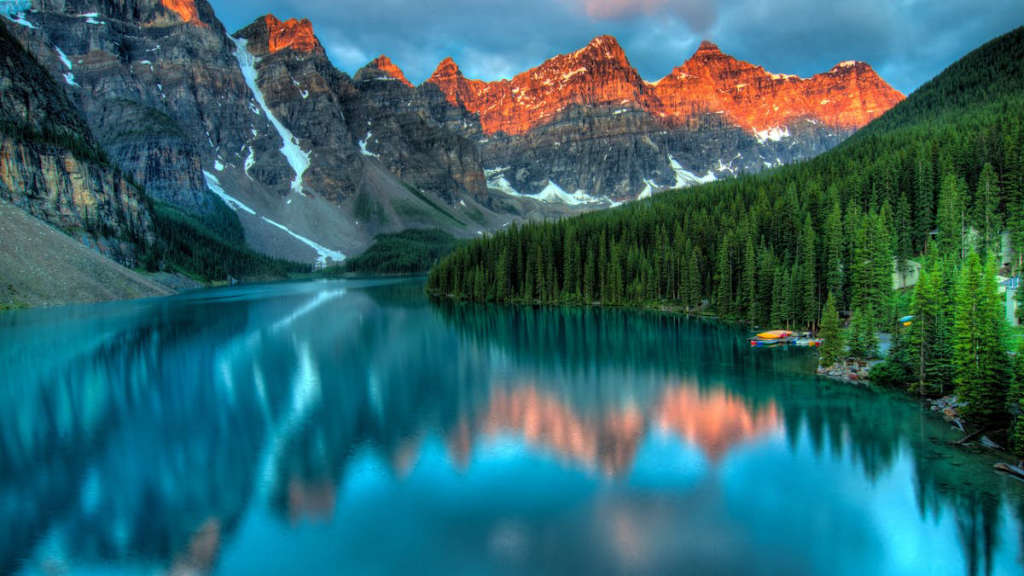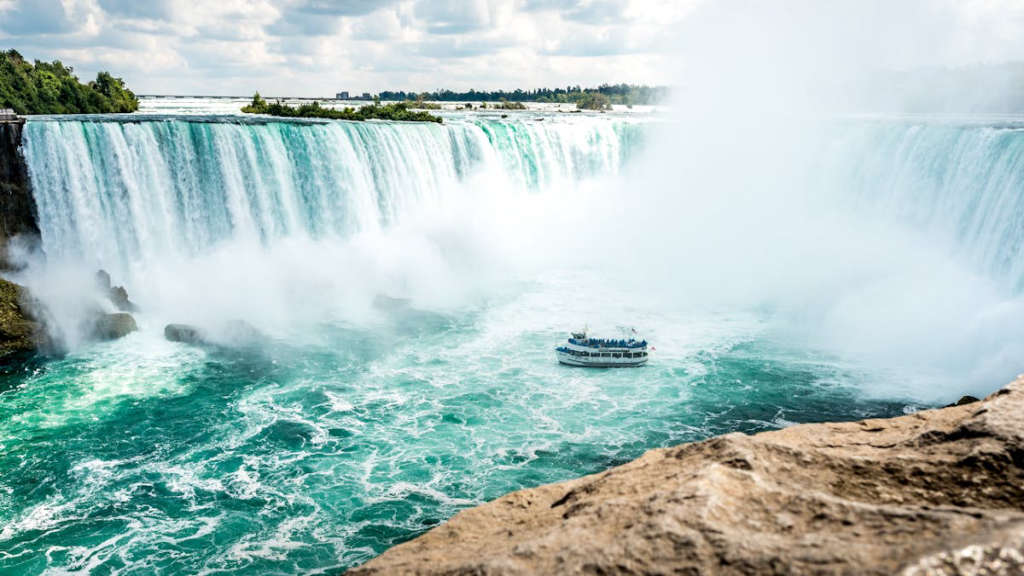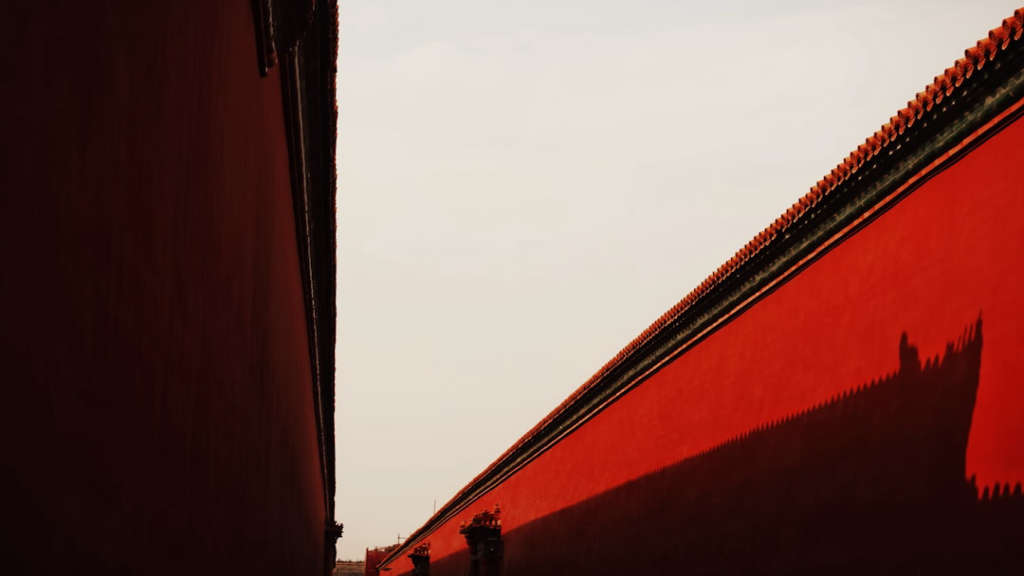If you are planning a trip to Jaipur, India, then a visit to the magnificent Hawa Mahal should definitely be on your itinerary. This stunning structure, also known as the “Palace of Winds,” is an iconic landmark in Jaipur and a testament to the city’s rich history and exquisite architecture. The Hawa Mahal tour offers you the chance to explore this historic monument, learn about its significance, and marvel at its intricate design and captivating beauty.
Main Points
- Explore the rich history and architecture of Hawa Mahal
- Discover the significance of this iconic Jaipur landmark
- Marvel at the stunning design and intricate details of the Palace of Winds
- Learn about the cultural and historical importance of Hawa Mahal in Jaipur, India
- Experience the breathtaking views from the palace’s windows and balconies
History of Hawa Mahal: From Past to Present
Hawa Mahal, also known as the “Palace of Winds,” is a stunning structure located in Jaipur, India. This beautiful palace has a rich history and has stood the test of time, serving as a symbol of Jaipur’s architectural and cultural heritage. Let’s take a closer look at the history of Hawa Mahal, from its early days to the present.
Early History
The construction of Hawa Mahal was commissioned in 1799 by Maharaja Sawai Pratap Singh, the grandson of Maharaja Sawai Jai Singh, who was the founder of Jaipur. The main purpose behind the construction of this palace was to allow the royal ladies to observe everyday life and festivals from the windows without being seen by the public.
Architectural Marvel
Hawa Mahal is a five-story palace made of red and pink sandstone, boasting a unique honeycomb-like structure with 953 small windows, or “jharokhas,” adorned with intricate latticework. The palace was designed by Lal Chand Ustad, an architect who was known for his expertise in Rajput architecture.
Present Day
Today, Hawa Mahal stands as an iconic landmark in Jaipur and a popular tourist attraction. Visitors can explore the intricate latticework, scenic views, and historical significance of this architectural marvel. Hawa Mahal serves as a reminder of India’s rich cultural heritage and architectural ingenuity.
Experience Hawa Mahal
If you’re planning a Jaipur travel experience or an India sightseeing tour, a visit to Hawa Mahal should be at the top of your list. Explore the stunning architecture, learn about the palace’s history, and take in the breathtaking views from the windows of this iconic structure.
Architectural Beauty of Hawa Mahal: A Detailed Analysis
When it comes to historic landmarks, the Hawa Mahal in Jaipur, India, is definitely a must-see. This stunning piece of Indian architecture is not only a testament to the rich cultural heritage of the region, but it also stands as a beautiful example of the intricate craftsmanship of the time.
Traveling to Jaipur, also known as the Pink City, one cannot miss the grandeur of the Hawa Mahal. Its unique honeycomb-like structure and its towering facade are a sight to behold. The palace was built in 1799 by Maharaja Sawai Pratap Singh, and it was designed by Lal Chand Ustad in the form of the crown of Lord Krishna, a Hindu god. This fascinating blend of history and architecture makes Hawa Mahal a significant destination for tourists from all over the world.
The Intricate Design
The Hawa Mahal is a five-story structure, and what makes it truly remarkable is its 953 small windows, also known as jharokhas, which are decorated with intricate latticework. These jharokhas were designed to allow the royal women to observe everyday life and festivals in the street below without being seen.
The design of the Hawa Mahal is an excellent example of the skill and artistry of Indian architects and artisans. The intricate detailing and the ornate carvings on the windows and facades are a true testament to the craftsmanship of the time.
The Cultural Significance
Aside from its architectural beauty, the Hawa Mahal also holds immense cultural significance. It served as a place for the royal women to observe the outside world without being seen themselves, as well as a place for them to enjoy the cool breeze during the hot summers. The palace also served as a venue for various royal events and festivities.
| Historic Landmarks | Travel to Jaipur | Indian Architecture |
|---|---|---|
| Historic landmarks | Travel to Jaipur | Indian architecture |
Overall, the Hawa Mahal is a true gem of Indian architecture and a testament to the rich cultural history of the region. Its beauty and significance make it a must-visit for anyone traveling to Jaipur.
The Intricate Design and Structure of Hawa Mahal
Jaipur, the vibrant and colorful city of Rajasthan, is home to a number of captivating tourist attractions. Among these, the Hawa Mahal stands out with its unique and intricate design.
The iconic Hawa Mahal, also known as the Palace of Winds, was built in 1799 by Maharaja Sawai Pratap Singh. The palace was designed by Lal Chand Ustad in the form of the crown of Lord Krishna, and its ornate 953 small windows, or jharokhas, are perhaps the most distinctive feature of its structure.
These jharokhas were designed to allow the royal ladies to observe everyday life and festivals in the street below without being seen, as they followed the strict purdah system. The jharokhas also served the purpose of allowing cool air to pass through the palace, making it an early form of air conditioning in the scorching desert heat.
The mesmerizing architectural design of the Hawa Mahal is a fine example of the blending of Hindu Rajput and Mughal architectural styles. The palace is made of red and pink sandstone, which gives it a warm, rosy glow in the morning light, further adding to its charm.
A Must-See Marvel
Visitors to Jaipur should not miss the opportunity to visit the Hawa Mahal and marvel at its intricate design and structure. The palace is not only an architectural wonder, but also holds great historical and cultural significance, making it a must-see during a trip to the Pink City.
From its delicate latticework to its unique five-story pyramidal shape, the Hawa Mahal is a testament to the skill and craftsmanship of the artisans of that era. It continues to stand as a symbol of Jaipur’s rich cultural heritage and is truly a sight to behold.
Hawa Mahal: A Symbol of Jaipur’s Rich Cultural Heritage
The Hawa Mahal, also known as the Palace of Winds, is a prominent landmark in Jaipur, the capital city of the Indian state of Rajasthan. Built in 1799 by Maharaja Sawai Pratap Singh, the Hawa Mahal is a magnificent five-story palace made of red and pink sandstone. Its distinctive honeycomb-shaped windows and latticework were designed to allow the royal ladies to observe everyday life and festivals in the street below without being seen, due to the purdah system prevalent at the time.
Architectural Splendor
The Hawa Mahal is an architectural marvel, with its unique façade adorned with 953 small windows, called jharokhas, decorated with intricate designs. The palace’s intricate latticework not only served as a screen for the royal women, but it also allowed the cool breeze to pass through, giving the palace its name, Hawa Mahal, which translates to “Palace of Winds.”
Cultural Significance
Besides its architectural significance, the Hawa Mahal is a testament to the rich cultural heritage of Jaipur. It has been a witness to the grandeur of the royal court as well as the everyday lives of the people of the city. The palace stands as a symbol of the opulence and the traditional Rajasthani architecture that continues to attract visitors from all over the world.
Visiting the Hawa Mahal
Today, the Hawa Mahal is a popular tourist attraction, offering stunning panoramic views of the city. Visitors can explore the various chambers, corridors, and the top floor, which offers a breathtaking view of the bustling streets below. The palace also houses a museum that showcases artifacts and exhibits related to the history and culture of Jaipur.
Conclusion
The Hawa Mahal stands as a timeless masterpiece that reflects the grandeur of Jaipur’s rich cultural heritage. Its intricate architecture and historical significance make it a must-visit destination for anyone exploring the vibrant city of Jaipur.
Exploring the Royal Connection of Hawa Mahal
Welcome to the royal city of Jaipur, where history and architecture intertwine to create a mesmerizing experience. One of the most iconic landmarks of Jaipur is the majestic Hawa Mahal, also known as the “Palace of Winds”. This architectural marvel holds a significant royal connection and is a must-visit for anyone interested in the rich heritage of Rajasthan.
Built in 1799 by Maharaja Sawai Pratap Singh, the Hawa Mahal stands as a testament to the grandeur and opulence of the Rajputana dynasty. The stunning facade of this five-story palace is adorned with intricate latticework, allowing the royal ladies to observe the bustling street life below while remaining unseen from the outside. The unique honeycomb design of the palace not only served as a retreat for the women of the royal household but also provided a cooling effect through the constant flow of breeze, earning it the name “Palace of Winds”.
As you step inside the Hawa Mahal, you will be transported back in time to the glorious era of the Rajput kings and queens. The elaborate architecture, ornate chambers, and stunning views from the windows offer a glimpse into the luxurious lifestyle of the royals. Each nook and cranny of the palace carries whispers of a bygone era, inviting you to delve into the royal tales and secrets hidden within its walls.
The Royal Legacy
The Hawa Mahal is not just a magnificent structure; it is a symbol of the royal legacy and cultural heritage of Rajasthan. The palace has witnessed the grandeur of royal ceremonies, the intrigues of courtly politics, and the everyday life of the royal family. It has stood the test of time, preserving the stories of valor, romance, and betrayal that have shaped the history of Jaipur.
Today, the Hawa Mahal continues to be a beacon of Rajasthan’s rich cultural heritage, attracting visitors from across the globe who are eager to unravel the mystique of this architectural gem. As you wander through its corridors and chambers, you can’t help but feel a sense of awe and admiration for the craftsmanship and vision of the artisans who brought this magnificent palace to life.
In conclusion, the Hawa Mahal is not just a tourist attraction; it is a living testament to the royal connection of Jaipur. It embodies the spirit of Rajasthan’s glorious past and invites you to become a part of its enduring legacy.
Hawa Mahal: An Architectural Marvel of Rajasthan
Hawa Mahal, also known as the “Palace of Winds,” is a breathtaking architectural wonder located in the heart of Jaipur, the capital city of the Indian state of Rajasthan. This stunning structure, built in 1799 by Maharaja Sawai Pratap Singh, is renowned for its unique honeycomb design and its five-story exterior with 953 small windows, or jharokhas, adorned with intricate latticework. The primary purpose of Hawa Mahal was to allow the royal women of the palace to observe everyday life and festivals on the streets below without being seen, due to the strict purdah system of the time.
The mesmerizing façade of Hawa Mahal is a striking pink color, symbolizing the warm hospitality and the essence of Rajputana royalty. The palace is constructed of red and pink sandstone, reflecting the brilliant hue of the desert sands of Rajasthan. The architectural style of Hawa Mahal is a fusion of Rajput and Mughal influences, with its graceful domes, floral patterns, and intricate carvings showcasing the rich heritage and craftsmanship of the region.
Key Features of Hawa Mahal
| Architectural Style | Rajput and Mughal fusion |
|---|---|
| Number of Windows | 953 jharokhas |
| Purpose | Observation point for royal women |
Hawa Mahal stands as a testament to the ingenuity and creativity of the artisans of the past, showcasing their skill in crafting a structure that seamlessly blends beauty, functionality, and cultural significance.
The grandeur and elegance of Hawa Mahal have made it an iconic symbol of Jaipur and a must-visit destination for tourists seeking to immerse themselves in the opulent history and architectural brilliance of Rajasthan.
Visitors to Hawa Mahal can explore the various chambers and passages within the palace, offering an insight into the royal lifestyle and the panoramic views of the bustling streets below. The intricate design elements and the cool breeze flowing through the windows are a testament to the timeless allure of this architectural marvel.
The Strategic Importance of Hawa Mahal in Jaipur’s History
Hawa Mahal, also known as the “Palace of Winds,” is a significant architectural marvel located in the Pink City of Jaipur, India. Built in 1799 by Maharaja Sawai Pratap Singh, this iconic structure holds great strategic importance in the history of Jaipur and the entire region.
Strategic Significance
Hawa Mahal served as a strategic vantage point for the royal ladies of the palace, allowing them to observe street processions and other activities without being seen themselves. This provided invaluable strategic intelligence and security for the royal family.
Contributions to History
The unique architecture of Hawa Mahal has contributed significantly to the history and culture of Jaipur. The intricate latticework and 953 small windows, or jharokhas, not only provided ventilation but also served as a strategic means for the ladies to observe daily life in the city.
Impact on Tourism
Today, Hawa Mahal stands as one of the most significant tourist attractions in Jaipur, drawing visitors from around the world to marvel at its strategic design and historical importance. Its strategic location in the heart of the city makes it a must-visit for anyone interested in the history and culture of Jaipur.
In Conclusion
In conclusion, the strategic importance of Hawa Mahal cannot be overstated. Its role in providing both strategic intelligence and cultural significance makes it a crucial part of Jaipur’s history and a must-see for tourists exploring the city.
The Influence of Mughal and Rajput Architectural Styles on Hawa Mahal
When we talk about the architectural marvels of India, Hawa Mahal stands out as a prime example of the influence of Mughal and Rajput architectural styles. The blending of these two distinct styles has resulted in a unique and awe-inspiring structure that continues to attract visitors from all over the world.
Mughal Architectural Influence
The Mughal architectural style is characterized by its grandeur and intricate detailing. This influence can be seen in the use of red sandstone and marble, as well as the ornate carvings and domes that adorn the façade of Hawa Mahal. The symmetrical design and expansive gardens surrounding the structure also bear resemblance to the Mughal style, showcasing a sense of harmony and balance in the overall composition.
Rajput Architectural Influence
The Rajput architectural style, on the other hand, is known for its emphasis on fortifications and decorative elements. This influence is evident in the use of jharokhas, or intricately designed windows, which are a defining feature of Hawa Mahal. These jharokhas not only serve a practical purpose in allowing cool air to pass through the structure, but also add to the overall aesthetic appeal with their elaborate latticework and vibrant hues.
Blend of Styles
What makes Hawa Mahal truly remarkable is the seamless integration of these two architectural styles. The Mughal and Rajput influences complement each other, resulting in a structure that exudes elegance and grandeur while also maintaining a sense of practicality and functionality. The intricate detailing and careful craftsmanship showcased in every aspect of the building highlight the mastery of both styles, making Hawa Mahal a true architectural gem.
| Mughal Architectural Influence | Rajput Architectural Influence | Blend of Styles |
|---|---|---|
| The use of red sandstone and marble | The emphasis on fortifications and decorative elements | Seamless integration resulting in a unique and awe-inspiring structure |
| Ornate carvings and domes | Intricately designed jharokhas | Elegance and grandeur with practicality and functionality |
| Symmetrical design and expansive gardens | Elaborate latticework and vibrant hues | Careful craftsmanship and meticulous detailing |
In conclusion, the influence of Mughal and Rajput architectural styles on Hawa Mahal has resulted in a structure that not only showcases the rich cultural heritage of India, but also stands as a testament to the ingenuity and creativity of its architects. The seamless blending of these two distinctive styles has given rise to a monument that continues to inspire and captivate all those who have the privilege of beholding its splendor.
Hawa Mahal: A Must-Visit Attraction for History and Architecture Enthusiasts
If you are a history and architecture enthusiast, then Hawa Mahal is a must-visit attraction for you. Located in the Pink City of Jaipur, India, this stunning palace is a perfect blend of history, culture, and architectural brilliance. Built in 1799 by Maharaja Sawai Pratap Singh, the main purpose of Hawa Mahal was to allow the royal ladies to observe everyday life and festivals through its windows without being seen by the public. The unique five-storey exterior, with its 953 small windows or “jharokhas”, is a remarkable example of Rajput architecture and design.
Visiting Hawa Mahal will give you a deep insight into the rich heritage and lifestyle of the royal families of Jaipur. You can explore the various chambers, corridors, and the top floor museum which showcases ancient artifacts and historical items related to the palace. Additionally, the spectacular view of the city from the top floors of Hawa Mahal is truly breathtaking and not to be missed.
Why Visit Hawa Mahal?
1. Historical Significance: Hawa Mahal is a symbol of Jaipur’s rich history and royal legacy. It offers a glimpse into the opulent lifestyle of the Rajput rulers and their architectural genius.
2. Architectural Marvel: The intricate design and the unique honeycomb structure of Hawa Mahal make it a masterpiece of Rajputana architecture. It is a perfect example of blending beauty with purpose.
3. Cultural Experience: A visit to Hawa Mahal is not just a sightseeing tour, it is an opportunity to immerse yourself in the vibrant culture and heritage of Rajasthan.
In conclusion, a trip to Hawa Mahal is a rewarding experience for anyone with a keen interest in history and architecture. It allows you to travel back in time and marvel at the grandeur of the royal era. So, make sure to include this magnificent palace in your itinerary when you visit Jaipur.
Conclusion
In conclusion, visiting the Hawa Mahal in Jaipur, India is a must-see experience for any travel enthusiast. This magnificent architectural wonder offers a glimpse into the rich history and culture of India, and the intricate design and stunning views from the palace make it a truly unforgettable experience. Whether you are exploring the bustling streets of Jaipur or embarking on a guided tour of the city, the Hawa Mahal is a highlight not to be missed. So, don’t forget to add the Hawa Mahal Jaipur India Travel Tour to your bucket list and prepare to be amazed by this incredible beauty.
Frequently Asked Questions
What is Hawa Mahal?
Hawa Mahal, also known as the ‘Palace of Winds,’ is a prominent landmark in Jaipur, India. It is a unique five-story exterior with over 900 intricately carved windows designed to allow cool air to flow through the palace.
When was Hawa Mahal built?
Hawa Mahal was built in 1799 by Maharaja Sawai Pratap Singh. It was designed by Lal Chand Ustad in the form of the crown of Krishna, the Hindu god.
What is the significance of Hawa Mahal?
Hawa Mahal was built for the royal women to observe everyday life and festivals celebrated in the street below without being seen. It also served as a way to allow cool air to circulate through the palace, making it an architectural marvel.
Is Hawa Mahal open to visitors?
Yes, Hawa Mahal is open to visitors and is a popular tourist attraction in Jaipur.
Are there any restrictions for visitors at Hawa Mahal?
Visitors are allowed to explore the ground floor and first floor of Hawa Mahal. However, the upper floors are restricted for public access.
What are the nearby attractions to Hawa Mahal?
Nearby attractions to Hawa Mahal include the City Palace, Jantar Mantar, and several bazaars for shopping.
Is there an entry fee for Hawa Mahal?
Yes, there is an entry fee for visiting Hawa Mahal. The fee varies for Indian and foreign visitors.
What are the best times to visit Hawa Mahal?
The best times to visit Hawa Mahal are during the early morning or late afternoon when the sunlight creates beautiful patterns through the windows.
Can visitors take photographs inside Hawa Mahal?
Yes, visitors are allowed to take photographs inside Hawa Mahal, but commercial photography or videography may require special permission.
Is there any specific dress code for visiting Hawa Mahal?
There is no specific dress code for visiting Hawa Mahal, but it is recommended to dress modestly and comfortably for the weather.


























0 Comment